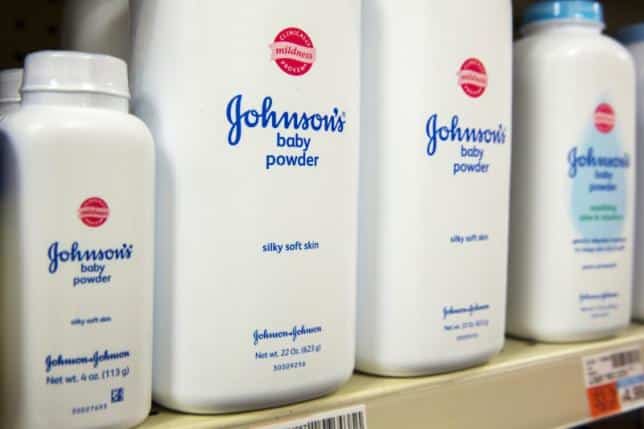A panel of experts convened by the U.S. Food and Drug Administration (FDA) is calling for the implementation of new testing standards and safety parameters for talc-based products, amid concerns about the potential for these products to be contaminated with asbestos and expose users to a risk of cancer. The recommendations, which came from experts representing eight government agencies, including the National Institute for Occupational Safety and Health and the U.S. Geological Society, will be heard at a hearing scheduled for February 4, the first FDA hearing addressing testing methods for asbestos in talc and talc-based cosmetics since 1971. After facing substantial criticism from other scientists, a congressman, consumer advocates and plaintiffs’ attorneys for a 2018 FDA meeting that relied on recommendations from experts with industry ties who downplayed the potential risks associated with asbestos-contaminated talc products, the FDA reports that this panel of government experts “worked independently and has not solicited recommendations from cosmetic manufacturers, industry groups or any other non-governmental groups.”
Why Does Talc Contain Asbestos?
Talc is a clay mineral commonly used in baby powder and body powder products to absorb moisture, combat odors and cut down on friction. In its natural form, some talc contains asbestos, a substance that is known to cause cancer in and around the lungs when inhaled. That is because talc and asbestos are similar minerals that naturally occur together in the earth and when talc is mined for use in talcum powders and other cosmetic products, it can be contaminated with asbestos. Despite knowing that talc can be contaminated with a known carcinogen, the FDA has never required the makers of talc-based products to test for asbestos, thereby allowing millions of consumers to use these products and unknowingly expose themselves to potential side effects like ovarian cancer and mesothelioma, an incurable cancer of the protective lining around the lungs and other organs.
The FDA’s finding of asbestos in Johnson & Johnson Baby Powder and other widely used talc-based cosmetics last year rekindled long-standing concerns among consumer advocates and some members of Congress about the risks of asbestos contamination in talc and the potential need for more stringent safety standards to better protect consumer health. In its talcum powder recall announcement last October, the FDA reported that “During talc mining, if talc mining sites are not selected carefully and steps are not taken to purify the talc ore sufficiently, the talc may be contaminated with asbestos.” These talcum powders and talc-based cosmetic products are used by millions of people, many of whom remain unaware that their cancer diagnosis in recent years may have been caused by exposure to asbestos-contaminated talc.
J&J May Have Known About Asbestos Contamination
In October, a nationwide recall of Johnson & Johnson Baby Powder was issued after testing indicated the presence of asbestos contamination in samples of the talc powder purchased from an online retailer. The recall affected approximately 33,000 Baby Powder bottles sold in stores nationwide and marked the first time J&J had recalled its talcum powder for possible asbestos contamination, as well as the first time the FDA had reported a finding of asbestos in the powder. Even in the face of the Baby Powder recall, J&J disputed the FDA’s findings and questioned the validity of the test results, stating that “Thousands of tests over the past 40 years repeatedly confirm that our consumer talc products do not contain asbestos.”
Despite frequent claims from J&J about the unquestionable safety of its talcum powder products, evidence that has come to light during the ongoing talcum powder litigation suggests that the company was aware that asbestos may be present in its talc-based powders and that users could be exposed to an increased risk of cancer, yet deliberately kept this information from consumers and the medical community. A Reuters report published in 2018 indicated that J&J knew for decades that its talcum powder products sometimes tested positive for asbestos as far back as the 1970s and into the early 2000s, but did not report these findings to federal regulators.
Talcum Powder Lawsuits Alleging Cancer Side Effects
Johnson & Johnson currently faces as many as 13,000 product liability lawsuits filed in the federal court system by consumers who allege that the company’s talcum powder products caused them harm. The majority of the talcum powder lawsuits involve women who developed ovarian cancer after regularly applying J&J talcum powder to their bodies for years, but there are many other lawsuits that allege exposure to asbestos in the talc-based powders caused them to develop mesothelioma and other injuries. Several talcum powder cases tried in state court have already resulted in massive damage awards for injured plaintiffs after juries found that there was compelling evidence that J&J failed to adequately warn consumers about the potential risk of side effects associated with its products, but the vast majority of the talcum powder claims are still pending in the federal court system.
At the FDA hearing in February, the agency will hear expert testimony regarding the best methods for testing talc and talc-based cosmetic products for asbestos contamination. In a Federal Register notice published by the FDA in advance of the meeting, the agency reported that “Even when using the most sensitive electron microscopy methods, laboratories testing the same product may reach different conclusions about the presence of asbestos. These differences may be attributed to a lack of a uniform standard for testing which provides unambiguous guidelines for identifying and counting asbestos fibers.” By discussing whether to develop standardized testing methods for talcum powders and talc-based cosmetic products, the FDA seeks to better “characterize and measure asbestos and other potentially harmful elongate mineral particles (EMPs) that may be present as contaminants in talc and cosmetic products manufactured using talc as an ingredient.”




